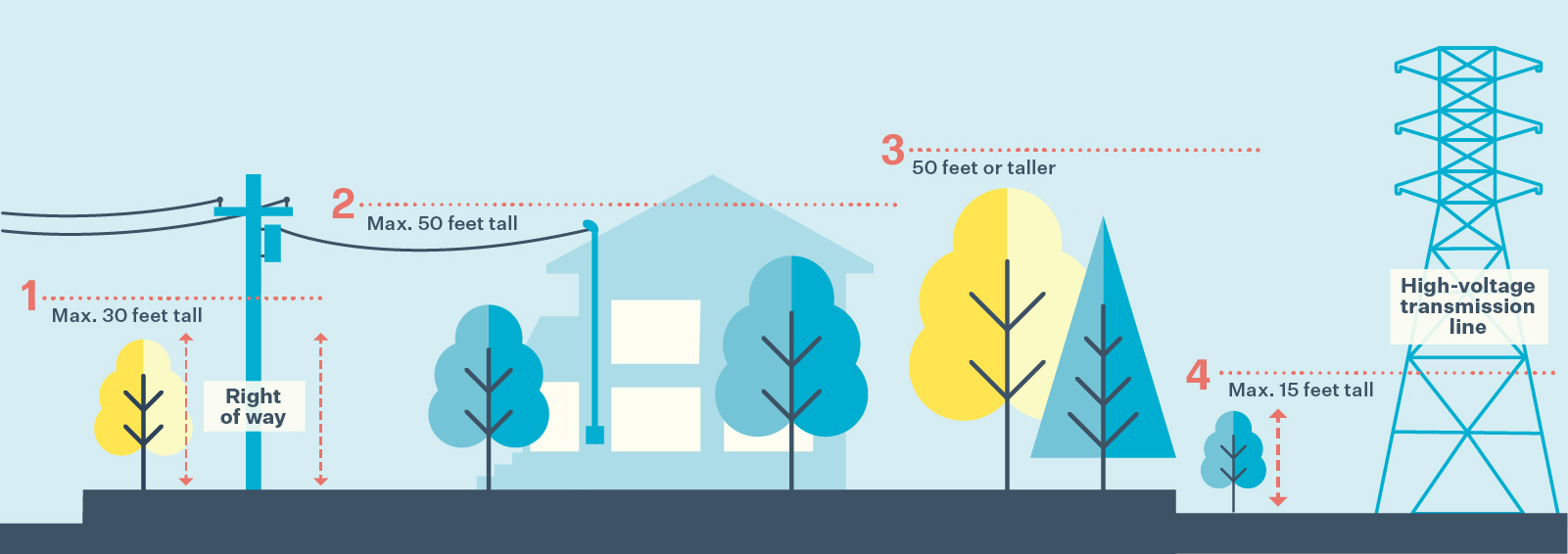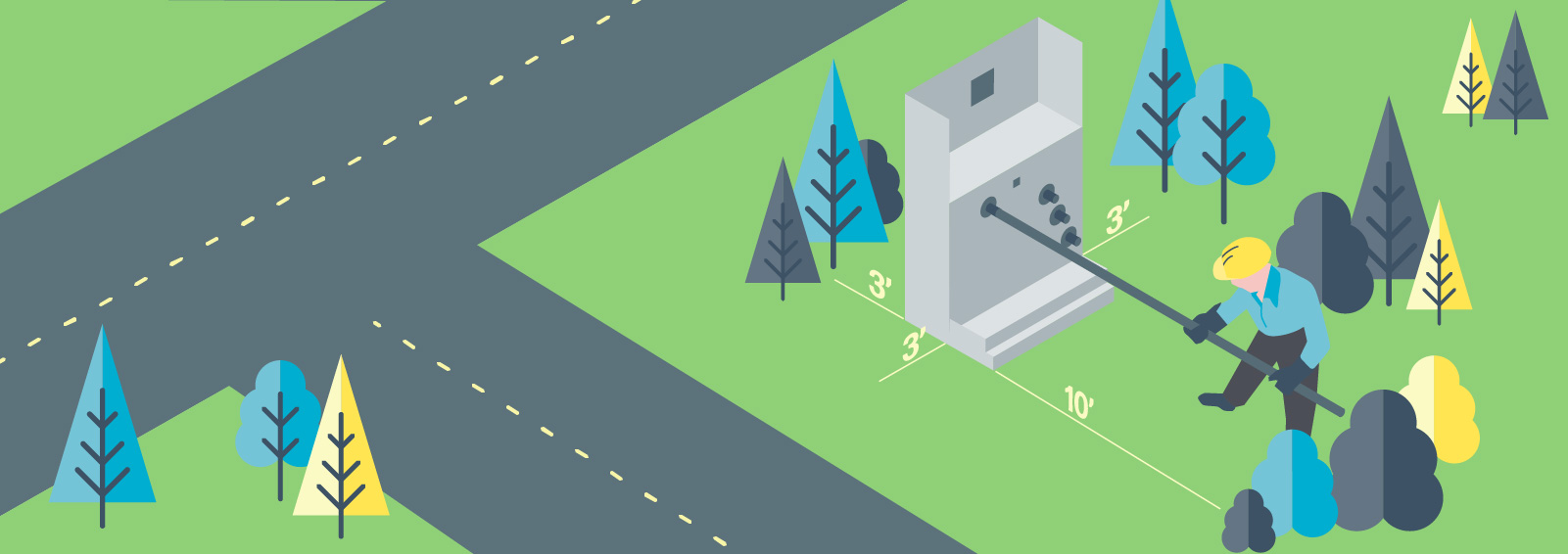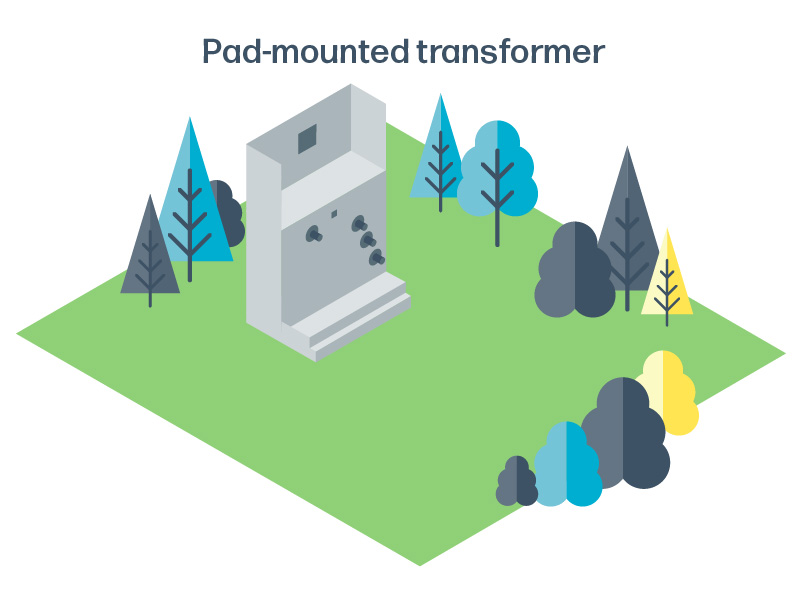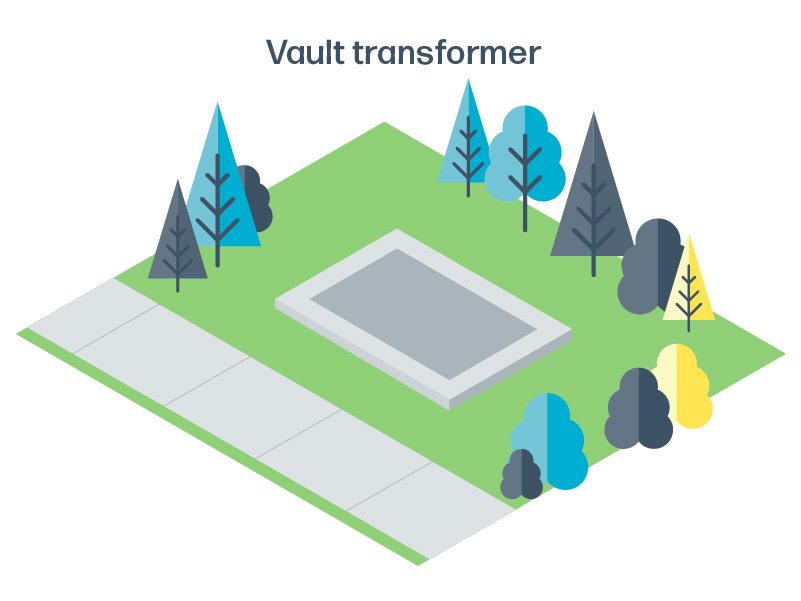Under distribution power lines – Zone 1
Distribution lines are primarily near roads and sidewalks, and sometimes backyards. Stick with small trees with a maximum mature height of 20-30 feet.
Front or side yard (sometimes backyard) – Zone 2
This is usually where the power line drops from the pole into your building. Choose small to medium trees, depending on the size of your yard. Medium-sized trees (30-50 feet) require large, private lawn areas.
Backyard – Zone 3
Any size tree is okay, as long as there are no overhead lines. However, consider the size of your yard. Large trees (50+ feet) require a large yard.
Near transmission lines – Zone 4
If there’s a high-voltage transmission line on or near your property, the tree should be no more than 15 feet tall and at least 30 feet away.




